5 Sure Fire Tips for Building a Campfire
A well-built campfire is the heart of any outdoor adventure. Whether you’re keeping warm, cooking meals, or simply enjoying the ambiance with friends, knowing how to build a fire safely and effectively is essential. Here are five time-tested techniques to ensure your campfire burns bright and steady.
Beyond its practical uses, a campfire fosters a sense of connection with nature and camaraderie among fellow adventurers. The flickering flames and crackling wood create a cozy atmosphere, making any camping trip feel more complete. Learning how to properly construct and maintain a fire can elevate your outdoor experience and enhance your survival skills.
Different fire-building methods serve unique purposes, from generating intense heat for cooking to creating a long-lasting, steady burn for warmth. Understanding these techniques allows you to adapt to various situations and environments, ensuring you get the most out of your campfire, whether in a backcountry setting or a designated campsite.
Teepee Method: A Quick and Reliable Fire
One of the most common and easiest ways to start a fire, the teepee method provides excellent airflow and quick ignition.
- Gather dry kindling and arrange it in a cone shape with the smaller sticks in the center.
- Stack progressively larger sticks around the teepee, leaving enough space for airflow.
- Light the kindling at the base and allow the flames to spread upward.
- As the fire grows, add more wood to maintain steady heat.
- Best for fast ignition and a bright flame, ideal for warmth and quick cooking.
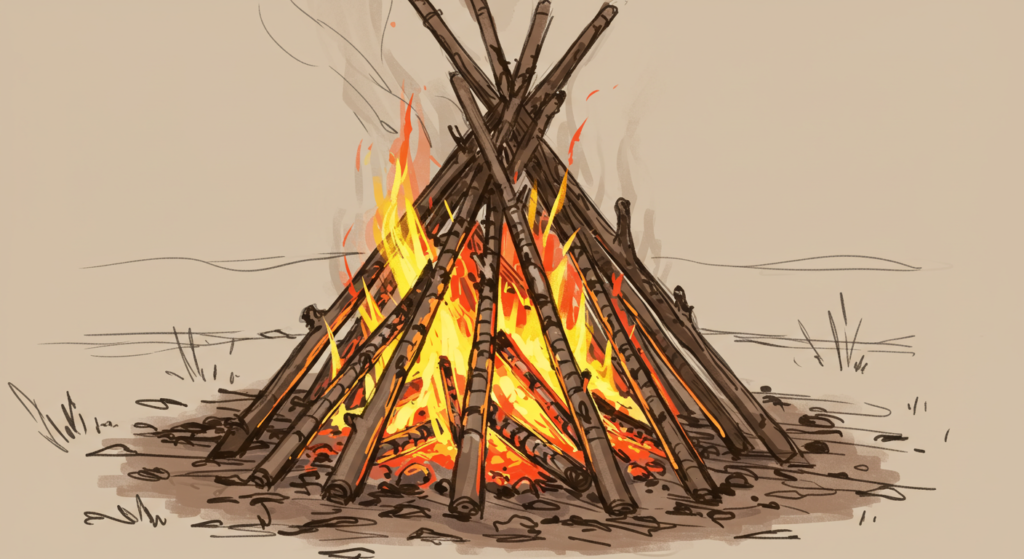
Log Cabin Method: Long-Lasting and Sturdy
This method is perfect for a controlled and long-burning fire, providing stability and sustained heat.
- Lay two thick logs parallel to each other on the ground.
- Stack two more logs perpendicularly on top to form a square.
- Continue layering logs in alternating directions to create a mini log cabin.
- Place kindling and smaller sticks in the center and light them.
- As the fire grows, add logs to the structure for a steady burn.
- Best for cooking and extended fires that require minimal tending.
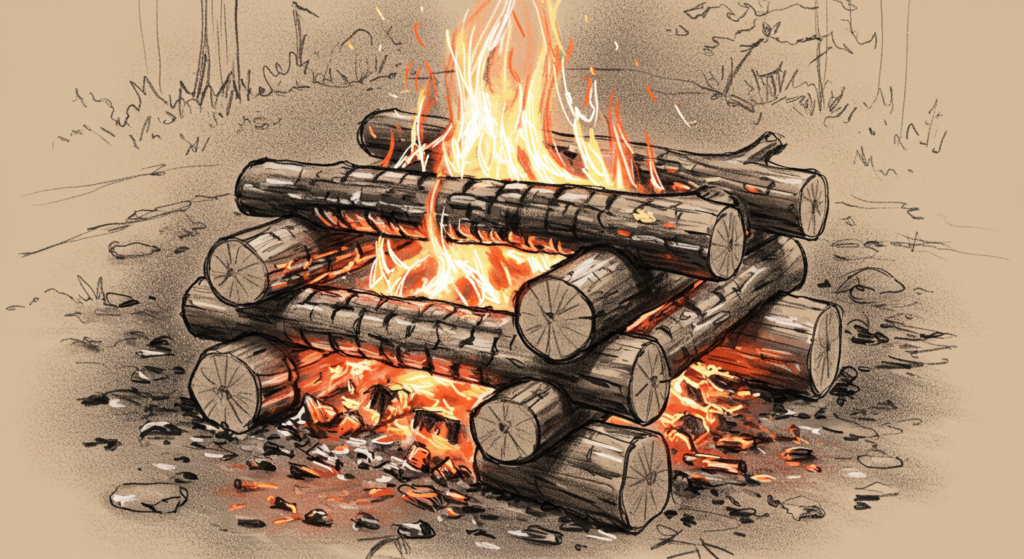
Pyramid Method: Maximum Heat and Efficiency
Designed for a slow, efficient burn, the pyramid method is great for maintaining a fire over time.
- Dig a shallow pit and line it with stones to contain the fire.
- Stack logs in a pyramid formation, with the largest pieces at the base and progressively smaller ones on top.
- Place kindling and tinder at the center and ignite it.
- The fire will burn downward, ensuring complete combustion of the fuel.
- Best for efficient heat output and fires that require less maintenance.
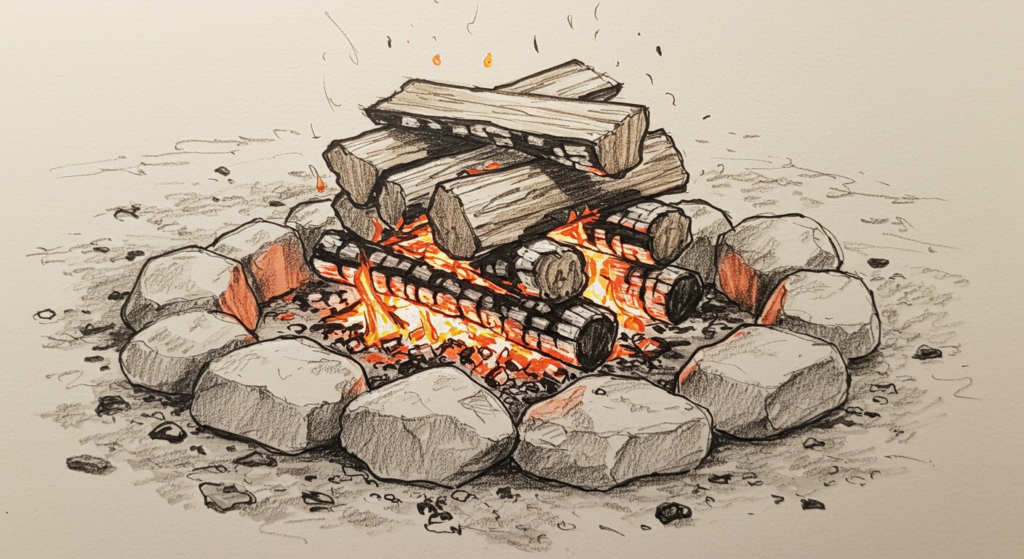
Upside-Down Fire: Low Maintenance and Cleaner Burn
A less conventional but highly effective technique, the upside-down fire method minimizes ash and smoke.
- Start with a base of large logs stacked in a row.
- Layer progressively smaller logs and kindling on top.
- Light the kindling at the top and let the fire burn downward.
- The fire will naturally feed itself as the upper layers burn into the larger logs below.
- Best for longer burn times with minimal intervention and reduced smoke.
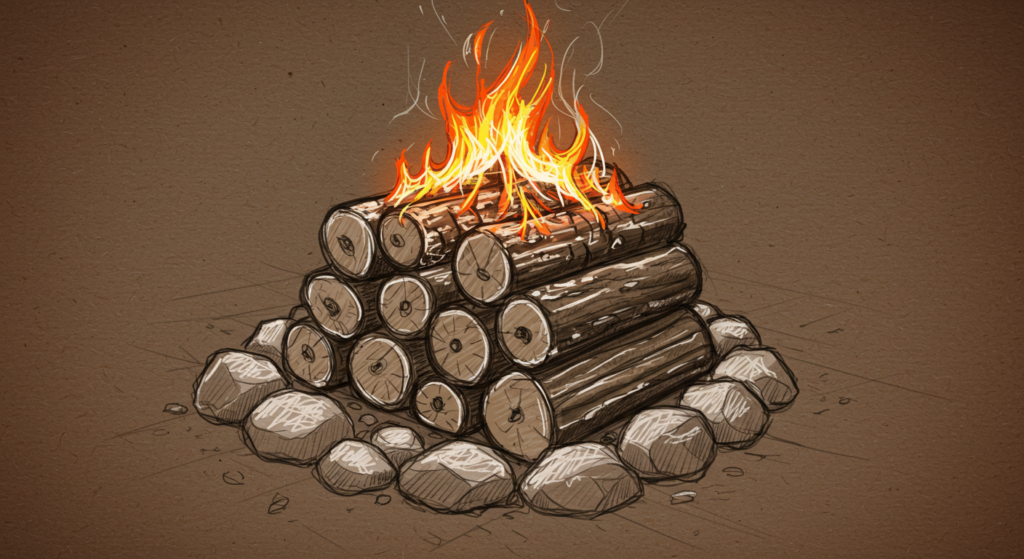
Swedish Torch: The Ultimate Cooking Fire
A compact, efficient fire perfect for cooking in rugged conditions.
- Use a large log, approximately two feet long, and cut deep slits into it in a star pattern.
- Place kindling and tinder inside the slits and light it from the top.
- The fire burns downward inside the log, creating a stable cooking surface.
- Great for boiling water, grilling, or placing a pot directly over the flames.
- Best for cooking meals with a stable and contained fire source.
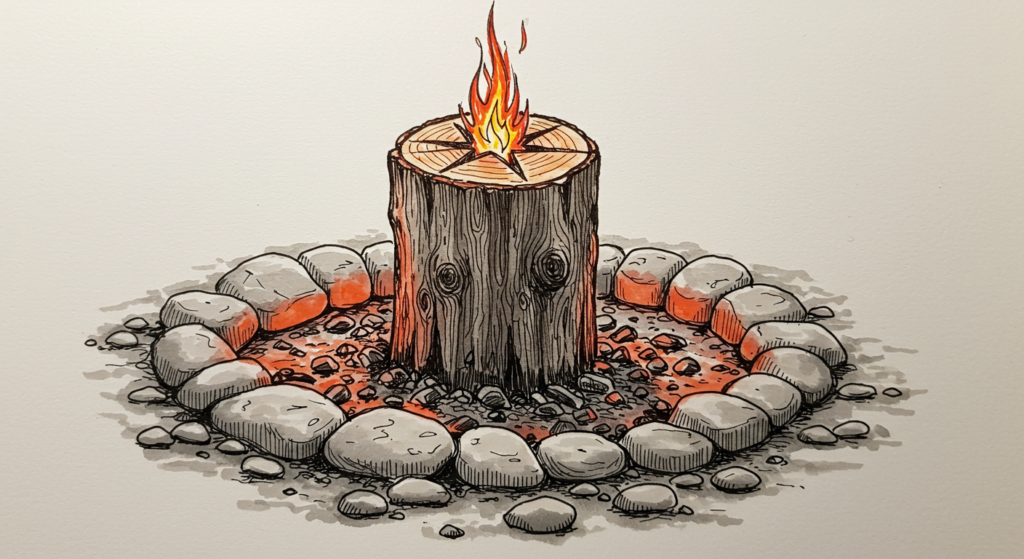
Techniques for Difficult-to-Start Campfires
Sometimes, wet conditions, high humidity, or a lack of dry wood can make starting a fire challenging. In these situations, using waterproof fire starters like wax-coated cotton balls, commercial fire-starting cubes, or even dryer lint can help ignite your fire quickly. Keeping a small stash of these in your gear can be a game-changer when natural tinder is scarce.
Another effective trick is building a windbreak with rocks, logs, or even your backpack to shield the fire from strong gusts. Placing the driest available tinder at the center and slowly adding kindling will increase your chances of success. If possible, collect wood from under thick trees or break off dead branches that haven’t been in direct contact with damp ground.
Campfire Safety and Best Practices
No matter which method you choose, fire safety is non-negotiable. Always check local regulations and ensure fires are permitted in your camping area. Some regions have seasonal restrictions due to wildfire risks, so it’s crucial to stay informed and follow guidelines to protect natural spaces.
Build fires only in designated fire rings or pits whenever possible. Keep your fire small and manageable, and always have a water source or shovel nearby to quickly extinguish flames if necessary. Be mindful of wind conditions, as strong gusts can cause sparks to spread beyond your campsite. Follow Leave No Trace principles by ensuring your fire is completely extinguished before leaving, scattering cool ashes to minimize impact, and using only downed wood instead of breaking branches from live trees. When possible, opt for a portable stove instead of an open fire to reduce environmental impact.
Never leave a fire unattended, even for a short period. When you’re ready to leave or go to sleep, fully extinguish the fire by pouring water over it and stirring the ashes. Continue adding water until everything is cold to the touch. Proper fire safety not only protects you but also preserves the wilderness for future adventurers.
Wrapping Up with a Campfire Glow
Mastering these campfire-building techniques will enhance your outdoor experience, ensuring warmth, safety, and successful cooking every time. Whether you’re a seasoned camper or a first-timer, knowing the right fire-building method for your needs makes all the difference.
So gather your wood, strike that match, and let the flames bring your adventure to life. After all, few things in the great outdoors are as mesmerizing as a well-built fire lighting up the night sky!
